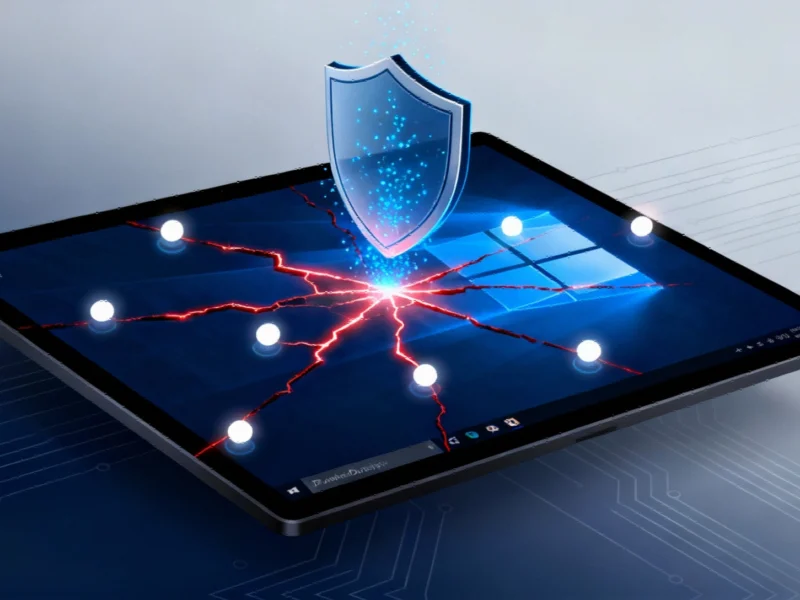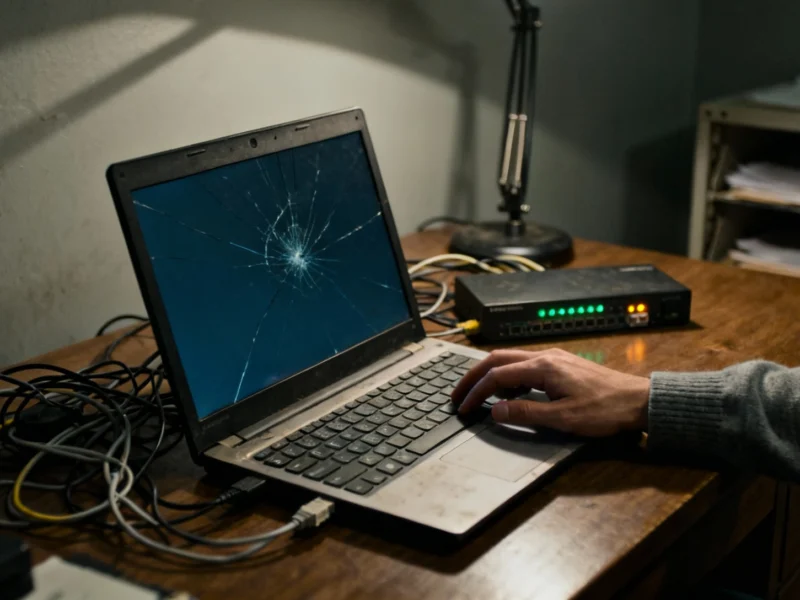Microsoft has delivered its final scheduled security update for Windows 10, and the sheer volume of vulnerabilities addressed should serve as a stark warning for organizations and individuals continuing to rely on the aging operating system. The October 2025 cumulative update patches an astonishing 172 security flaws, including six zero-day vulnerabilities that represent immediate threats to unpatched systems.
The magnitude of this final security patch underscores why Windows 10’s security update addresses critical vulnerabilities that could otherwise leave systems exposed to sophisticated attacks. This comprehensive fix represents Microsoft’s last official security commitment to the operating system that still powers millions of devices worldwide, marking a pivotal moment in enterprise and personal computing security.
Understanding the Zero-Day Threat Landscape
The six zero-day vulnerabilities patched in this final update represent the most immediate danger to Windows 10 users. These security flaws existed in the wild without Microsoft’s knowledge until they were actively being exploited, giving the company zero days to prepare defenses before public disclosure. Among the critical fixes are vulnerabilities in Windows Remote Access Connection Manager, a Secure Boot bypass that could allow unauthorized system access, and a concerning hole in TPM 2.0 security.
The TPM 2.0 vulnerability carries particular irony, given that this security feature serves as a gateway requirement for Windows 11 upgrades—a transition many Windows 10 devices cannot make due to hardware limitations. This creates a perfect storm where vulnerable systems cannot upgrade to more secure platforms while losing their security update lifeline.
The Cumulative Risk of Unpatched Systems
While individual security vulnerabilities might seem abstract or irrelevant to daily computer use, the collective risk becomes undeniable when viewed through a long-term lens. With 172 vulnerabilities addressed in just this final month of official support, the mathematical reality becomes alarming: within six months, unpatched Windows 10 systems could be facing exposure to over a thousand known security holes.
This vulnerability accumulation transforms what was once a secure operating system into what security experts describe as a “digital sieve”—increasingly permeable to malware, ransomware, and unauthorized access attempts. The situation mirrors what occurred with Windows 7, where organizations that delayed migration faced escalating security incidents and compliance challenges.
Extended Security Updates: A Necessary Bridge
Microsoft’s Extended Security Updates (ESU) program offers a critical stopgap for organizations and individuals not yet ready to transition from Windows 10. The program provides continued security patches for up to three years after the official end-of-support date, with the first year available at no cost for consumer users.
While some may question the necessity of continued security updates, the alternative represents an unacceptable risk in today’s threat landscape. As technology continues to evolve with innovations like the budget-friendly Acer Nitro 5 gaming laptop available at Walmart, the security foundation supporting these devices becomes increasingly critical.
Broader Industry Implications
The Windows 10 security situation reflects larger trends across the technology industry. As industry observers question Apple’s AI strategy amid shifting market dynamics, the fundamental importance of maintaining secure operating systems remains constant. Similarly, the legal landscape continues to evolve around technology governance, as evidenced by the Digital Rights Coalition and major unions filing landmark technology legislation that could reshape corporate responsibility for security updates.
Meanwhile, the social implications of technology security intersect with emerging platforms, including a new wave of social media apps providing hope in increasingly fragmented digital spaces—all of which depend on secure underlying operating systems to protect user data and privacy.
Strategic Recommendations for Windows 10 Users
Organizations and individual users facing the Windows 10 end-of-support deadline have several strategic options:
- Immediate enrollment in Extended Security Updates: For systems that cannot be immediately upgraded or replaced, the ESU program provides essential protection while migration plans are developed.
- Accelerated hardware refresh cycles: Devices incompatible with Windows 11 should be prioritized for replacement to eliminate the security gap entirely.
- Enhanced security layering: Additional security controls, including application whitelisting, network segmentation, and advanced endpoint protection, can mitigate some risks for systems that must remain in service.
- Comprehensive risk assessment: Organizations should conduct thorough evaluations of their Windows 10 footprint to identify critical systems and develop prioritized migration plans.
The final Windows 10 security update serves as both a conclusion and a beginning—marking the end of an era for Microsoft’s flagship operating system while beginning a critical period of decision-making for the millions who still depend on it. The 172 vulnerabilities patched in this final update represent not just technical fixes but a powerful argument for proactive security management in an increasingly complex digital ecosystem.
Based on reporting by {‘uri’: ‘techradar.com’, ‘dataType’: ‘news’, ‘title’: ‘TechRadar’, ‘description’: ”, ‘location’: {‘type’: ‘country’, ‘geoNamesId’: ‘2635167’, ‘label’: {‘eng’: ‘United Kingdom’}, ‘population’: 62348447, ‘lat’: 54.75844, ‘long’: -2.69531, ‘area’: 244820, ‘continent’: ‘Europe’}, ‘locationValidated’: False, ‘ranking’: {‘importanceRank’: 159709, ‘alexaGlobalRank’: 1056, ‘alexaCountryRank’: 619}}. This article aggregates information from publicly available sources. All trademarks and copyrights belong to their respective owners.



